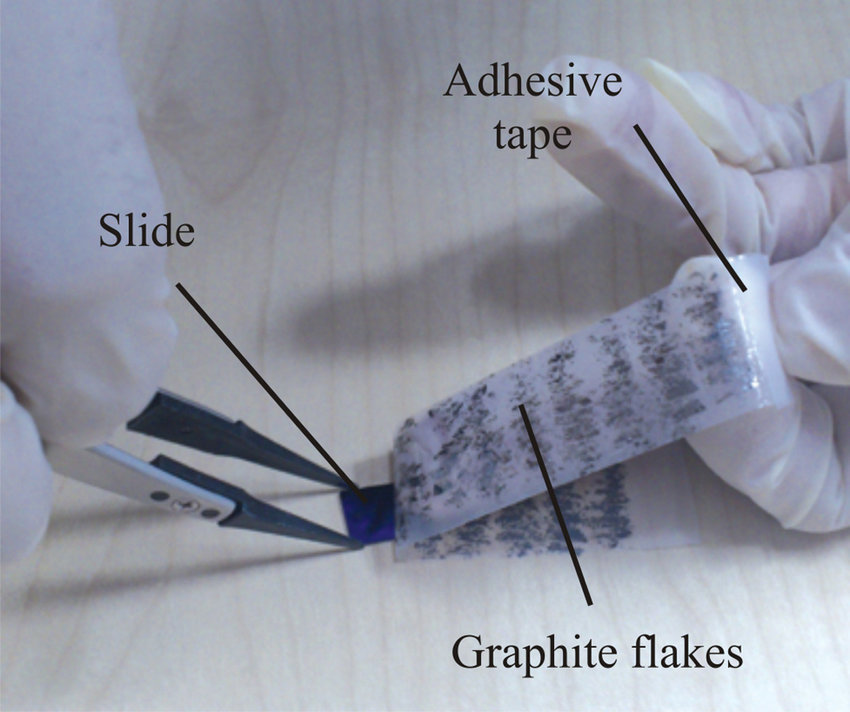Scotch Tape Method: A Simple Yet Powerful Technique for Isolating 2D Materials
Overview of the Scotch Tape Method
The Scotch tape method, also known as micromechanical cleavage or mechanical exfoliation, is a simple yet powerful technique used to isolate thin layers of two-dimensional (2D) materials from their bulk counterparts. This method gained widespread attention after it was used to isolate graphene, a single layer of graphite, in 2004 by Andre Geim and Konstantin Novoselov, who were awarded the Nobel Prize in Physics in 2010 for their groundbreaking work.

The Process of Mechanical Exfoliation
The Scotch tape method relies on the weak van der Waals forces that hold the layers of certain materials together, allowing them to be easily cleaved into thinner layers. The process involves the following steps:
- A piece of bulk material, such as graphite or molybdenum disulfide, is placed on a piece of adhesive tape.
- The tape is folded over the material and peeled apart, cleaving the bulk material into thinner layers.
- This process is repeated several times, each time thinning down the layers further.
- The tape with the thinned-down material is then pressed onto a substrate, such as silicon dioxide or another desired surface.
- The tape is gently rubbed to ensure good contact between the material and the substrate.
- Finally, the tape is carefully peeled away, leaving behind thin layers of the material on the substrate surface.
Advantages of the Scotch Tape Method
The Scotch tape method offers several advantages over other techniques for isolating 2D materials:
- Simplicity: The method requires minimal equipment and can be performed in a standard laboratory setting without the need for specialized tools or cleanroom facilities.
- Cost-effectiveness: Compared to other methods, such as chemical vapor deposition or liquid phase exfoliation, the Scotch tape method is relatively inexpensive and does not require costly precursors or solvents.
- High-quality samples: Mechanical exfoliation can produce high-quality, pristine samples of 2D materials with minimal defects and contamination.
- Versatility: The method can be applied to a wide range of layered materials, including graphite, transition metal dichalcogenides, hexagonal boron nitride, and more.
Limitations and Challenges
Despite its advantages, the Scotch tape method also has some limitations and challenges:
- Low yield: The process of mechanical exfoliation is inherently random, and the yield of monolayer or few-layer samples is relatively low compared to the bulk material used.
- Limited scalability: The manual nature of the method makes it difficult to scale up for large-scale production of 2D materials.
- Lack of control over size and thickness: The Scotch tape method offers limited control over the size and thickness of the exfoliated samples, which can vary widely.
- Substrate dependence: The success of the method can depend on the choice of substrate, as some surfaces may not provide sufficient adhesion or may introduce unwanted interactions with the 2D material.
Applications and Impact
The Scotch tape method has played a crucial role in the discovery and study of various 2D materials, enabling researchers to investigate their unique properties and potential applications. Some notable applications of 2D materials isolated using this method include:
- Electronic devices, such as transistors, sensors, and photovoltaic cells
- Optoelectronic devices, such as photodetectors and light-emitting diodes
- Catalysis and energy storage applications
- Fundamental research on the physics and chemistry of low-dimensional systems
The isolation of graphene using the Scotch tape method marked a significant milestone in the field of nanoscience and nanotechnology, sparking a surge of interest in 2D materials and their potential applications. The method's simplicity and accessibility have democratized research on 2D materials, enabling scientists worldwide to explore these fascinating materials and their properties.
